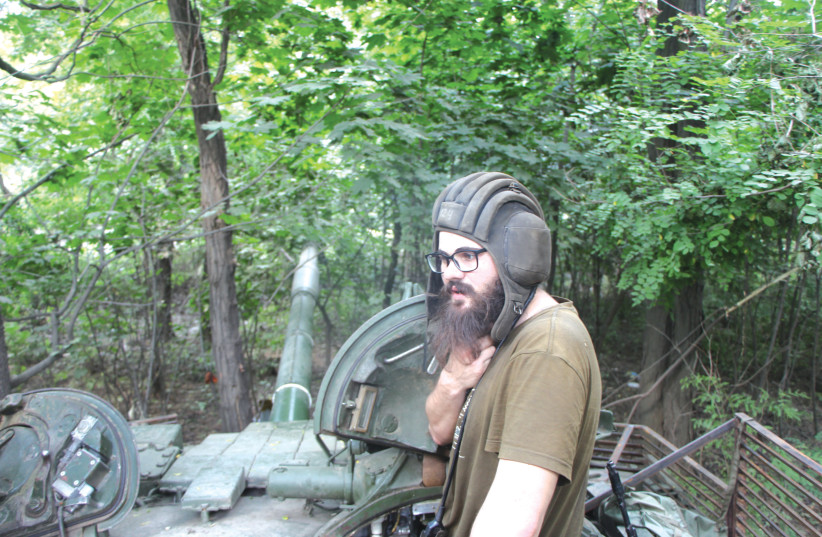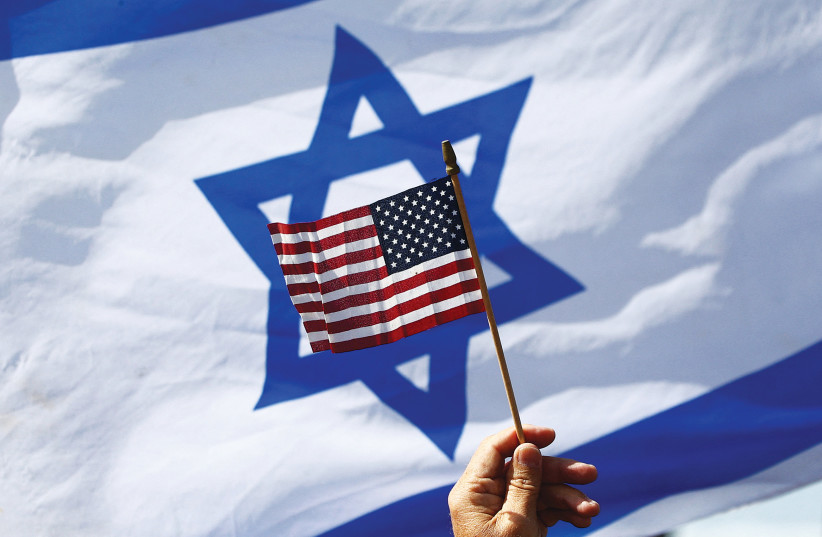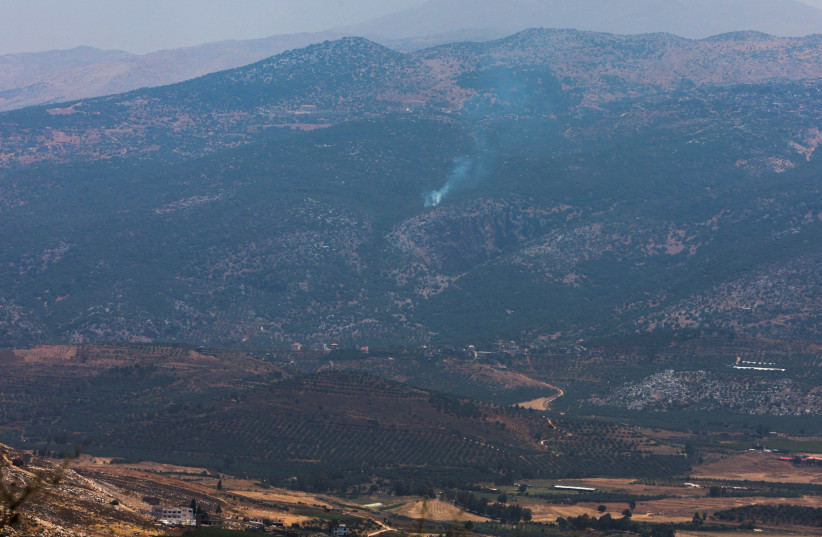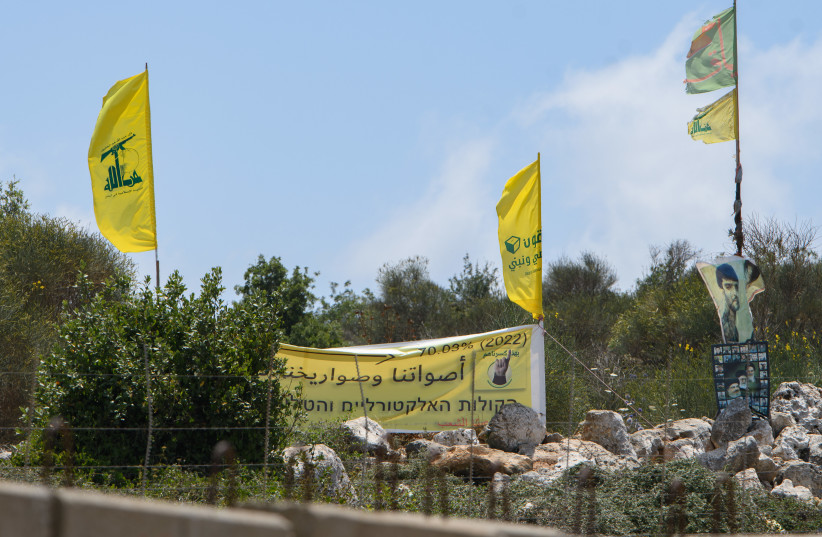by Jonathan Spyer
BEHIND THE LINES: “If the Western allies didn’t help, we’d already have a lack of munitions here; but for the breakthrough, we need more tanks, munitions, aviation," says a Ukrainian commander.
 |
SECOND-LIEUTENANT Ilya, a tank commander in the 59th
Motorized Brigade, takes a break on his tank, concealed in a forest in
the Pokrovsk area of Donbas, on July 9.
(photo credit: JONATHAN SPYER)
|
Kramatorsk, Ukraine – Entering Ukraine from the south, via Kishinev in Moldova, one is first struck by how normal things seem. Odesa, a few hours’ drive from the border, is as charming as it has always been. There are tourists from all over the country. Restaurants and hotels are open.
This
apparent normality is partly deceptive. The recent destruction, almost
certainly by the Russians, of the Kakhovka dam on June 6 led to the
disgorging of vast amounts of wreckage from the Dnipro River onto
Odesa’s coastline. Dead farm animals, debris from houses, and even mines
are washed up close to the beaches, which have become unusable.
Nevertheless,
the near absence of the direct threat of the war in Odesa is
significant and is a testament to the achievement of the Ukrainian armed
forces in the course of the last year and a half of war. It is worth
remembering that the intention of Vladimir Putin’s armies, at the
outbreak of the war, was to obliterate the Ukrainian state.
I
visited Kyiv in early March 2022, when the Russian army was menacing
the Ukrainian capital. Then, the sense of impending catastrophe was
tangible and real. In addition to the effort to take Kyiv, cutting
Ukraine off from its Black Sea coast was an essential part of this
process.
That March,
amid shelling by Russian ships on the coast, and airstrikes, there were
fears that Moscow would attempt an amphibious landing. The possibility
that Russian forces sweeping west from Kherson would simply envelop the
city, as they pushed on to the border with Romania, was also
frighteningly real.
A
Ukrainian service member inspects a continuous track of a Russian tank
destroyed during a counteroffensive operation of the Ukrainian Armed
Forces, amid Russia's attack on Ukraine, in Kharkiv region, Ukraine,
September 14, 2022. (credit: PRESS SERVICE OF THE 30TH INDEPENDENT
MECHANIZED BRIGADE OF THE UKRAINIAN ARMED FORCES/VIA REUTERS)
This danger has now passed. Russian forces faltered around Kyiv. Then, in August 2022, the Ukrainian counteroffensive
in Kherson liberated thousands of square kilometers of territory and
pushed the lines farther east, enabling the return of the cautious sense
of normality now prevailing in Odesa.
Reaching
the war, as a result, now requires driving nine or 10 hours east of
Odesa, across the endless wheat plains and the industrial landscapes of
this most vast of European countries. Now, in the Donbas, the third
strategic phase of the Ukraine war is underway.
The
first, in February-March 2022, was the failed Russian attempt to take
Kyiv and the southern coast, and to terminate Ukrainian independence.
The second, in the summer of 2022, was the large-scale Ukrainian
counteroffensive in the east, in Kharkiv to the north and Kherson to the
south.
The third,
which began on June 4 this year, is an attempt by the Ukrainians to
further reduce Russian territorial holdings in eastern Ukraine, with the
ultimate goal of driving Putin’s armies from all of Ukraine.
In
early July, I set off eastward from Odesa to the Donbas, with the
intention of taking a close look at this third phase of the war. I spent
time with infantry, armored and artillery units in the frontline areas,
and with various support elements. I concentrated mainly on the Bakhmut
front, where the Ukrainians are currently making slow and grinding
progress, reversing Russia’s declaration of the full conquest of the
town on May 20.
Overall,
as has been widely reported, the current counteroffensive has failed to
make the rapid progress that Ukrainians and Western observers had hoped
for.
So far, there
have been no large-scale breaches of the Russian lines by Ukrainian
armor, followed by a rush to deepen and widen the gap. Instead,
artillery duels are taking place along the 1,200 km. frontline, with
small and incremental gains recorded by the Ukrainians.
The
sheer scale of destruction wrought by the war in the Donbas is
breathtaking. Around the frontline areas, one sees whole towns and
villages that have been depopulated, many reduced to rubble.
While
traveling through one such area close to Bakhmut, a village recently
liberated from the Russians, we came across a Ukrainian aerial
reconnaissance unit. Holed up in a half-destroyed house, the unit was
operating drones over the Russian lines in order to provide accurate
targeting for the M777 howitzers of the Ukrainian artillery in the area.
At present, the war in the Donbas is a gunners’ war, to a great extent.
Despite
the largely static nature of the fronts, this is a war that the
Ukrainians at present appear to be winning. The latest figures suggest
that Kyiv’s forces, using modern Western equipment and methods, have
destroyed four times as many Russian howitzers as they have themselves
lost.
Ukrainians contrast themselves with the Russians
The
mood among the reconnaissance team was bullish, with the soldiers keen
to point out the contrasting attitudes and practices of the Russians and
their own side.
Oleksandr,
40, the commander of the team, noted that “the Russians have been
pushed back here, in recent days.” Part of his family is still trapped
on the Russian side of the lines, so he didn’t want to be photographed.
“The
Russians work with quantity, not quality,” Oleksandr continued. “We’re
in shock at their attitude to their own fighters. Because when we enter
their trenches, we see that they are full of dead bodies. They don’t
even try to take their own dead away.”
Dimitri,
one of Oleksandr’s team, gestured toward a pile of discarded Russian
uniforms and ammunition boxes that they have stashed against one of the
walls of the courtyard. “In the basement of this house, there are
microwaves and other stuff that they stole from people,” he said with
disgust.
And as for
the counteroffensive and its prospects: “We’ll advance because we have
no choice. It’s our land. The same as when Israel fought for their independence from the Arabs.”
This
combination of views – a kind of astonishment and disgust at the
Russian way of war and what it reveals about the nature of the invading
regime, and a grim consequent determination that the regime must not
prevail – was echoed among other Ukrainian fighters whom we spoke to.
Students of the school for drone pilots Dronarium Academy practice
during a lesson, amid Russia's attack on Ukraine, in an undisclosed
location, Ukraine, June 30, 2023. (credit: REUTERS/Alina Smutko)
At
a training exercise of the 80th Airborne Brigade, a few kilometers from
the Bakhmut frontlines, Oleg, a 42-year-old company sergeant major,
noted that “Wagner doesn’t respect its own people. They’ll send a group
forward. They’ll be killed. Half an hour later, another group will come
forward in the same direction, over the bodies, and they’ll also be
killed. But on the other hand, they’re a hard enemy. They don’t
surrender, they fight to the end.”
He
contrasted this “self-sacrificing” aspect of the Wagner PMC fighters
with those of the Russian army, who he said were more likely to retreat.
And regarding the counteroffensive more generally, he said, “Taking
back 100 meters of our homeland is a big distance too, and means a lot
for Ukraine.”
Ilya,
25, from Chernivtsi, a tank platoon commander in the 59th Motorized
Brigade, has been in the war from the start. The 59th was involved in
the first, desperate battles around Kherson in February and March 2022.
In his quiet and steady voice, speaking at a position of the brigade
near the city of Pokrovsk, he described hair-raising engagements of
tank-against-tank in the first days, sometimes at ranges of just a few
meters.
As for the
current matter, he said: “If the Western allies didn’t help, we’d
already have a lack of munitions here; but for the breakthrough, we need
more tanks, munitions, aviation. Our people are the priority, and we
don’t want to just throw them away.
“For
the breakthrough against the Russians, we’d need a 3-1 advantage
against the enemy,” he continued, “but to fight inside Donetsk, inside
the city, we’d need 7-1. So right now, we’re in the phase of protecting –
step by step. But we are slowly moving forward – when the situation
allows, with minimized losses, then we move forward.”
This
is the current shape of things, five weeks into the Ukrainian
counteroffensive of summer 2023. Ukraine’s continued sovereignty, thanks
to the determination and early mobilization of a broad mass of the
Ukrainian people, is no longer under direct threat. The matter now under
consideration is the remaining Russian presence on a considerable
stretch of the territory of eastern Ukraine.
Despite
the savage practices of the Russian army, its tenacity in defense is
notable. Lacking air superiority or the overwhelming superiority in
numbers that might allow for a breakthrough against the well-prepared
Russian defenses, the Ukrainians are currently slowly and incrementally
moving forward – but not, as yet, in a way to seriously threaten the
Russian position.
Barring
a major shift in this picture in the remaining two months or so that
are available before the autumn rains begin, the prospect appears to be
for an ongoing, grinding, war of attrition in eastern Ukraine.
For
Ilya, Oleksandr, Oleg, and thousands like them – mobilized civilians
crewing one of the most combat-hardened forces now in existence anywhere
– it seems that it will still be a long fight ahead.
Jonathan Spyer
Source: https://www.jpost.com/international/internationalrussia-ukraine-war/article-749991
Follow Middle East and Terrorism on Twitter









